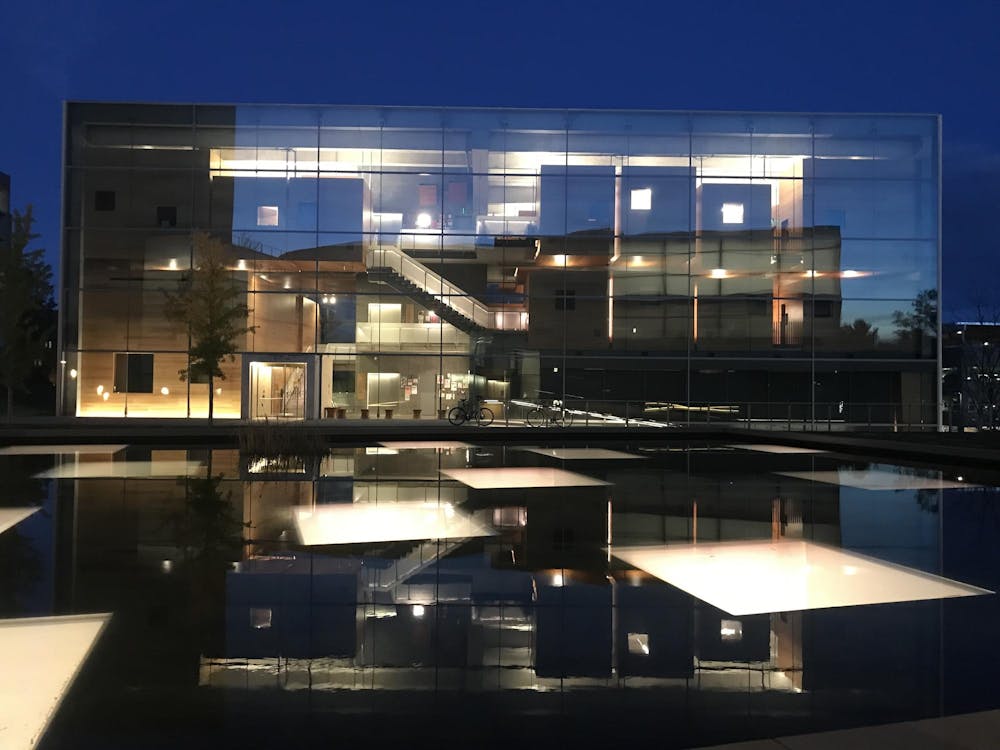Course enrollment is always a stressful process at Princeton. Early in the morning, students pry open their eyes to enroll in courses through Tigerhub. Those interested in Visual Arts (VIS) classes may face particular difficulties enrolling, as the classes fill rapidly. Why are VIS classes so difficult to get into? Ahead of Fall 2024 course enrollment, Professor Jeff Whetstone, the head director of Princeton’s Visual Art Department, might have some answers.
The VIS department offers two types of classes: genre and topical. Genre classes are sculpture, photography, and drawing, while the topical classes delve into the political body of art. Both types of classes cover a range of content relating to the visual arts. Whetstone stated that the demand for both the hand-on classes and the introductory classes is “incredibly high.”
For the Spring 2024 class registration season, there were 510 waitlist spots represented by 338 individuals, as some students were on multiple waitlists. According to Whetstone, all of the practice of art majors and the VIS minors were able to enroll off the waitlists to fulfill their coursework requirements. By the end of the add/drop period, 138 spots opened up in various VIS classes, allowing 83 individuals to enroll off the waitlists. Yet, other students were not as fortunate, especially with popular classes, such as introduction to photography classes. At the end of the add/drop period, there were still 372 requests representing 277 individuals.
Gabriel Centeno ’27, who is considering a VIS minor, remarked on the effect of the competitiveness in the enrollment process despite his success in getting into a VIS class. “I was definitely aware of the projected difficulty,” Centeno said. He also mentioned how he felt a bit uncertain of pursuing the VIS minor, given the evident difficulty in consistently getting into the classes necessary for it.
In his eight years at Princeton, Whetstone remarked that the department’s popularity has been “steadily rising,” with extreme surges in popularity the past few years. To reconcile this demand, the VIS department utilizes a waitlist system that is based on a first come, first serve basis. However, art majors and visual arts minors receive priority to enroll off the waitlist.
The fight for VIS classes is not related to the unique materials or studios involved. Instead, the size creates issues for interested students. According to Whetstone, it is “essential for most of these VIS classes to have smaller enrollment sizes.” The one-on-one time between students and professors is integral for a hands-on artistic learning experience.
Whetstone stated that there are certain classes that have the “potential to expand,” particularly digitally-oriented classes. For instance, there is a plan to run a large digital photography class in the future. In the meantime, due to the VIS department’s popularity, Whetstone encourages students to investigate which classes are cross-listed with the VIS department to alternatively fulfill requirements.

Whetstone also acknowledged the anxiety that may occur when students cannot enroll in classes necessary for their major or minor. “We have been very dedicated, as a faculty and a staff, to make sure that the practice of art majors and VIS minor certificates get their classes. So far, it has not been a problem since the second day of classes, because we get people into those classes,” said Whetstone.
Looking toward the future, the VIS department has recently hired more faculty and developed a long-term two to three year plan for growth. “We are making every effort possible to hire more instructors,” Whetstone said.
Currently, the department has completed and is working to submit a “strategic plan for growth,” for expanding the department “intelligently and strategically.” “There will be future growth, and there’s present growth now,” said Whetstone, noting that it takes time to grow a department successfully. “We want to select the best faculty in the most strategic areas for the Princeton students who want to make art.”
Ultimately, all of these efforts for the strategic plan are dedicated to the students. Whether it is adding faculty or expanding class sizes, Whetstone made it clear that the VIS department is for the students, and hopefully, going forward, course enrollment may be just a little bit easier.

Connor Romberg is an assistant editor for The Prospect from Winneconne, Wis.
Please send corrections to corrections[at]dailyprincetonian.com.








